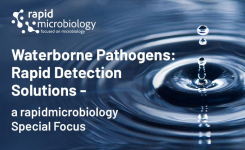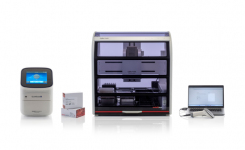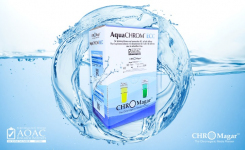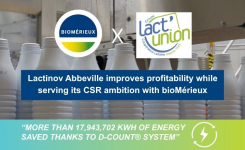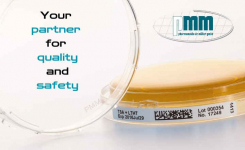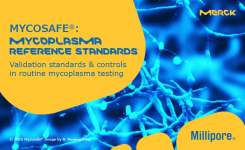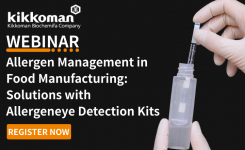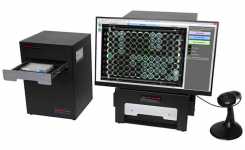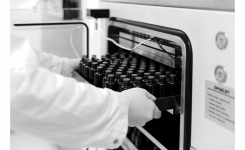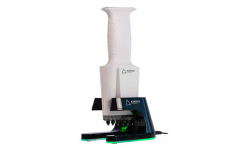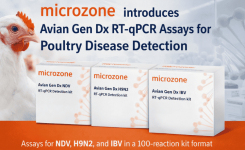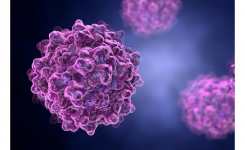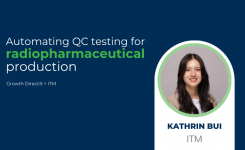
Counting Techniques in Microbiology: Getting From a Single Cell to Usable Data
Key Points
- Counting microorganisms allows an estimation of the microbial population in a variety of products.
- From this a prediction of the life of the product to be applied (product spoilage).
- Product safety issues are not directly addressed by total count data.
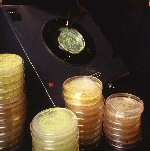 Ever since microbiology was truly empirical (What caused the problem? Can it be isolated? And if I put it back will the same thing happen again?), those engaged in the science have also added a further question; How many are there?
Ever since microbiology was truly empirical (What caused the problem? Can it be isolated? And if I put it back will the same thing happen again?), those engaged in the science have also added a further question; How many are there?
In the context of the global population of microorganisms in a particular sample, such information is referred to in many different ways. Total viable count (TVC), but what about viable non-culturable (VBNC) organisms? Aerobic plate count (APC), anaerobes notwithstanding. Mesophilic plate count (MPC) psychrophiles and thermophiles need not apply. Colony Forming Units (CFU's) is that one cell or a clump?
Whatever the acronym of choice, to count them you have to be able to detect them. Procedures for counting microorganisms have therefore relied on one or more of the following techniques:
- Direct counting: microscopy; automated cytometry
- Culturing so that the biomass becomes visible
- Reporter assays where metabolic components are measured: colorimetry; impedance; ATP; turbidometry
The real value of total counts is derived from historical data trends, i.e. data points that lie outside the known trendline may require some action to be taken.
Conversely, a change in the flora morphology of a count may indicate a more significant change to product risk. This trending, applied to product intermediates and raw materials allows processes to be better controlled, facilitating the HACCP approach.
How to arrive at a number
Direct counting techniques do not rely on cell population growth. The oldest technique is microscopy where the individual cells are magnified to become visible to the naked eye. This procedure has developed from the original brightfield techniques through staining and phase-contrast approaches.
More recently epifluorescence and immunofluorescence adaptations of cell labelling are used in conjunction with cytometry e.g. laser scanning/flow cytometry. In both technologies the trigger for a count is derived from single cells. Digital microbiology! These counts may also be confirmed visually using a microscope.
Culture techniques rely on the growth of a microbial population to levels that are visible. This is achieved under specific conditions, e.g. time, temperature, oxygen content and pressure in liquid or on solid media containing specified nutrients. On solid media after incubation, the resultant colonies may be counted.
This technique assumes that each colony is derived from an individual cell and that the incubation conditions allowed the recovery of all cells present. Despite these limitations, plate count techniques remain the 'gold standard' in microbiology. Sensitivity may be improved with the use of filtration and labour can be reduced by the use of ready-to-use media.
Serial dilutions can be avoided by the use of spiral platers or other automated plating techniques. The task of counting the colonies present can be achieved with the use of automated plate readers or image analysers. Counts may also be achieved in liquid media using Most Probable Number (MPN) techniques.
Reporter assays assess the microbial population size through the metabolic activity of the cells. The population does not necessarily have to be growing. Such techniques include colorimetry; impedance/conductance; ATP (adenosine triphosphate) and turbidometry.
Optical systems such as colorimetry measure the colour changes in dyes added to the growth medium as they are metabolized by microorganisms. The technique can be correlated to colony forming units (cfu), such as with the BioLumix instrument.
Turbidimetric systems also rely on changes in the optical characteristics of the growth medium. In this case, changes in the microbial cell population are monitored by measuring the opacity of the growth medium, which will become more opaque as the cell numbers increase.
Microbial metabolism produces highly charged extra-cellular end products, changing the impedance/conductance of the growth medium. It is this change in electrical activity that is utilized in these techniques to report on the growth characteristics of microbial populations.
Intra-cellular molecules can also be utilized in reporter assays. The bioluminescent reaction produces light in direct proportion to the level of ATP present. Microbial ATP can be specifically targeted by differential extraction to report on the loading of microbes in a variety of product and environmental samples. In practical use ATP sytems are usually used as a screening [presence/absence] test rather than as a counting device.
Get the latest updates in Rapid Microbiological Test Methods sent to your email? Subscribe to the free rapidmicrobiology eNewsletter






